Pan-cancer proteogenomics characterization of tumor immunity
- PMID: 38359819
- PMCID: PMC10988632
- DOI: 10.1016/j.cell.2024.01.027
Pan-cancer proteogenomics characterization of tumor immunity
Abstract
Despite the successes of immunotherapy in cancer treatment over recent decades, less than <10%-20% cancer cases have demonstrated durable responses from immune checkpoint blockade. To enhance the efficacy of immunotherapies, combination therapies suppressing multiple immune evasion mechanisms are increasingly contemplated. To better understand immune cell surveillance and diverse immune evasion responses in tumor tissues, we comprehensively characterized the immune landscape of more than 1,000 tumors across ten different cancers using CPTAC pan-cancer proteogenomic data. We identified seven distinct immune subtypes based on integrative learning of cell type compositions and pathway activities. We then thoroughly categorized unique genomic, epigenetic, transcriptomic, and proteomic changes associated with each subtype. Further leveraging the deep phosphoproteomic data, we studied kinase activities in different immune subtypes, which revealed potential subtype-specific therapeutic targets. Insights from this work will facilitate the development of future immunotherapy strategies and enhance precision targeting with existing agents.
Keywords: histopathology; immune subtype; immunotherapy; kinase activity; multiomic deconvolution; proteogenomics; tumor immunity.
Copyright © 2024 The Author(s). Published by Elsevier Inc. All rights reserved.
Conflict of interest statement
Declaration of interests R. Sebra is currently a paid consultant and equity holder at GeneDx. L.C.C. is a founder and member of the board of directors of Agios Pharmaceuticals; is a founder and receives research support from Petra Pharmaceuticals; has equity in and consults for Cell Signaling Technologies, Volastra, Larkspur, and 1 Base Pharmaceuticals; and consults for Loxo-Lilly. J.L.J. has received consulting fees from Scorpion Therapeutics and Volastra Therapeutics. T.M.Y. is a co-founder and stockholder of DeStroke.
Figures
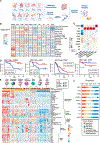
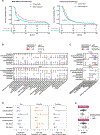
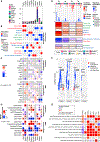
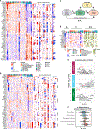
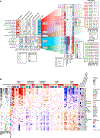

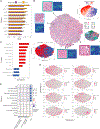
References
MeSH terms
Grants and funding
- U24 CA210954/CA/NCI NIH HHS/United States
- U01 CA214116/CA/NCI NIH HHS/United States
- U24 CA210985/CA/NCI NIH HHS/United States
- R33 CA263705/CA/NCI NIH HHS/United States
- U24 CA210986/CA/NCI NIH HHS/United States
- HHSN261201500003C/CA/NCI NIH HHS/United States
- U24 CA271075/CA/NCI NIH HHS/United States
- T32 GM146636/GM/NIGMS NIH HHS/United States
- U24 CA210955/CA/NCI NIH HHS/United States
- R35 CA197588/CA/NCI NIH HHS/United States
- P30 ES017885/ES/NIEHS NIH HHS/United States
- U24 CA210993/CA/NCI NIH HHS/United States
- U24 CA271114/CA/NCI NIH HHS/United States
- U24 CA264250/CA/NCI NIH HHS/United States
- T32 GM136542/GM/NIGMS NIH HHS/United States
- U24 CA210967/CA/NCI NIH HHS/United States
- U24 CA270823/CA/NCI NIH HHS/United States
- F30 CA271622/CA/NCI NIH HHS/United States
- U24 CA210972/CA/NCI NIH HHS/United States
- U54 CA263001/CA/NCI NIH HHS/United States
- HHSN261201500003I/CA/NCI NIH HHS/United States
- U24 CA210979/CA/NCI NIH HHS/United States
- U24 CA271012/CA/NCI NIH HHS/United States
- U01 CA214114/CA/NCI NIH HHS/United States
- U01 CA214125/CA/NCI NIH HHS/United States
- F30 CA265288/CA/NCI NIH HHS/United States
- U24 CA224260/CA/NCI NIH HHS/United States
LinkOut - more resources
Full Text Sources
Medical
Miscellaneous

